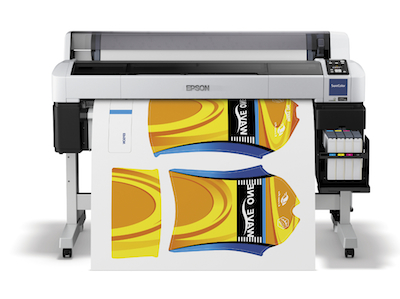The SC-F6200
Epson has released two new dye-sublimation printers the SC-F7200 and SC-F6200 to help users produce superior-quality textiles and promotional goods.
These new models enhance Epson’s dye-sublimation line-up by offering customers the chance to expand production capabilities. According to the company both the SC-F7200 and SC-F6200 are capable of producing high-quality printed textiles, such as clothing, sportswear and home textiles, and also offer the flexibility needed to sublimate onto a range of hard substrates, the SC-F6200 is ideally suited to this application. The printer can be used to sublimate onto tailored goods, including mugs and phone and tablet covers.
Martin Johns, product manager, said, ‘With these two models, we have utilised the latest Epson engineering advancements to deliver two new dye-sublimation printers to our customers. With its new and enhanced capabilities, the SC-F6200 opens up a plethora of new possibilities in the photographic market for printing photos on to substrates such as metal and wood. Alongside this, the SC-F7200 has been exclusively created and developed to help the roll-to-roll textile market create outstanding results.’
Both printers utilise PrecisionCore TFP printheads. These work in tandem with the UltraChrome DS ink-set to help users achieve the best-possible results. A new HDK Black ink has been created primarily for textile printing, to help produce deep, neutral blacks and dense shadows. Users printing on rigid substrates will benefit from the standard black ink, as it produces smooth gradations.
The printers also come bundled with Wasatch software, meaning users are ready to start printing straight away, without the need for further investment.
The units come with high-capacity ink systems for a low printing cost per square metre. Disposing of waste ink is now easier as both printers now include a two-litre bottle to collect wastage. Both products are also available with Epson’s managed print service programme, which allows tighter budget control and helps reduce overstocking.

